Myanmar (Burma), land of golden pagodas and shimmering rivers, holds a special kind of magic in Bagan.
Picture this: thousands of ancient temples rising from the plains, sunrise hot air balloon rides over breathtaking landscapes, and a spiritual energy that seems to hum in the air.
Our Bagan travel guide, packed with first-hand tips and local insights, will help you experience the magic of this incredible destination and avoid common first-timer pitfalls.
Ready to unlock the magic of Bagan? Let’s go!
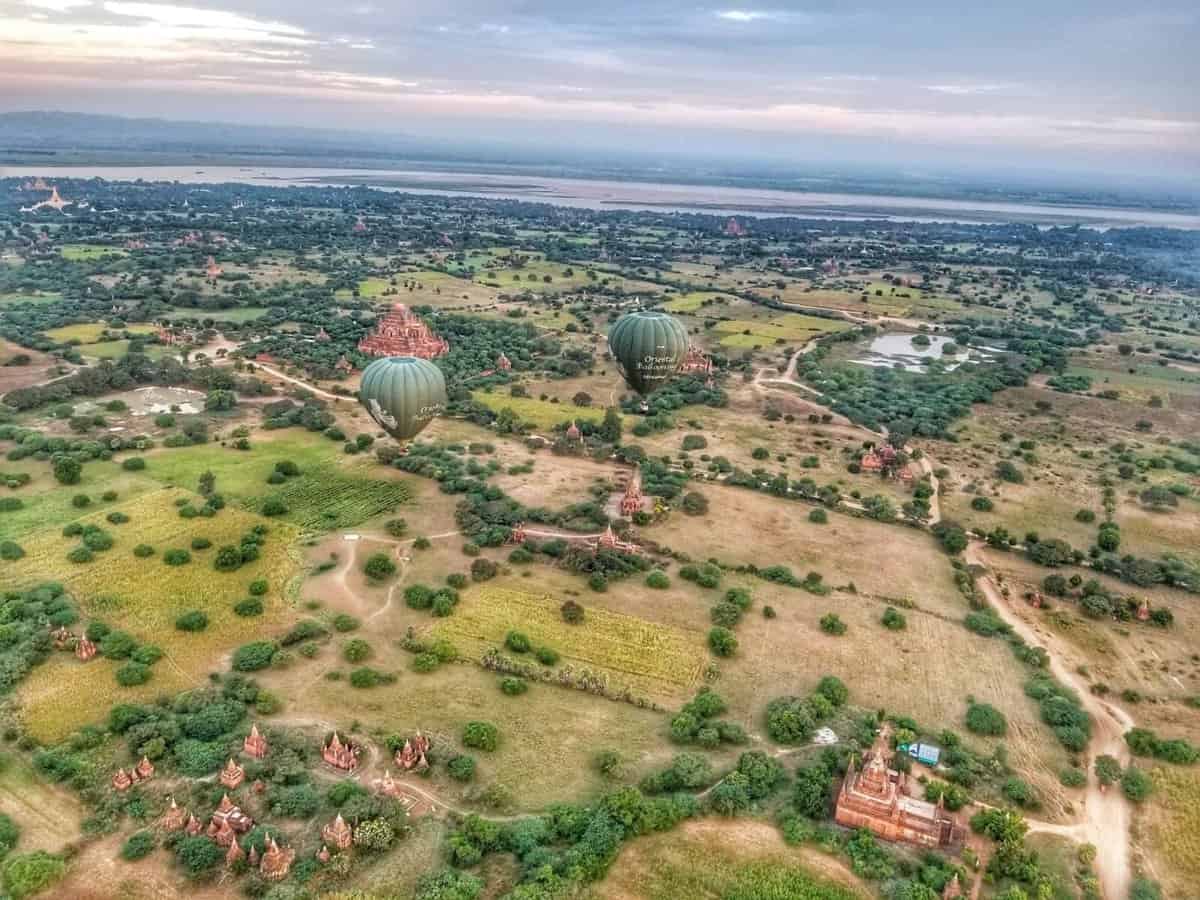
Pro Traveler Tips for Exploring Bagan
The Bagan Archaeological Zone is a sprawling testament to history, encompassing over 40 square miles (104 sq km).
To put that into perspective, we spent 3 hours exploring just a handful of temples between New and Old Bagan.
Key takeaway? Don’t underestimate the time it takes to truly soak in the magic of this place. Plan your temple visits beforehand, prioritizing what you want to see, and pace yourself – you’re on Bagan time now.
Getting Around:
- Venture off the Beaten Path: Some of our most treasured Bagan moments were discovering hidden temples, free from crowds, where we could truly soak in the peaceful atmosphere. Google Maps and a thirst for adventure are your best friends here.
- Distances: Old Bagan, New Bagan, and Ngang Yu are surprisingly spread out.
- Motorbikes: A popular way to explore, but factor in 10 to 45 minutes of travel time between areas.
- Public restrooms are limited. We only came across one conveniently located near Thatbyinnu Temple.
Pro-Traveler Tip: Always carry tissues with you! It’s a good habit to get into when traveling throughout Asia.

Food and Drink:
- Small stalls near major temples offer snacks and drinks, but don’t expect supermarkets.
- For proper meals: Head to New Bagan or Nyaung-U, both brimming with restaurant options.
- Staying hydrated is crucial: The Bagan sun is intense! Carry a reusable water bottle at all times.
Safety and Respect:
- Mind Your Step: Temples are ancient and require caution. Watch out for uneven ground, steep stairs, and low doorways.
- Bring a Light Source: Temple interiors can be dark. A headlamp or phone flashlight comes in handy, especially before sunrise or after sunset.
- Respectful Interactions: Refrain from feeding stray dogs roaming the temple grounds, however tempting it might be.
Timing is Everything:
- Beat the Heat: Visit temples before noon or after 3 p.m. for bearable temperatures.
- Sunrise and Sunset Magic: Witnessing the temples bathed in golden light is a must! Plan ahead, some temples are better positioned for these magical moments. If heading out for sunrise, book a tuk-tuk the night before – driving a motorbike in the dark can be risky.
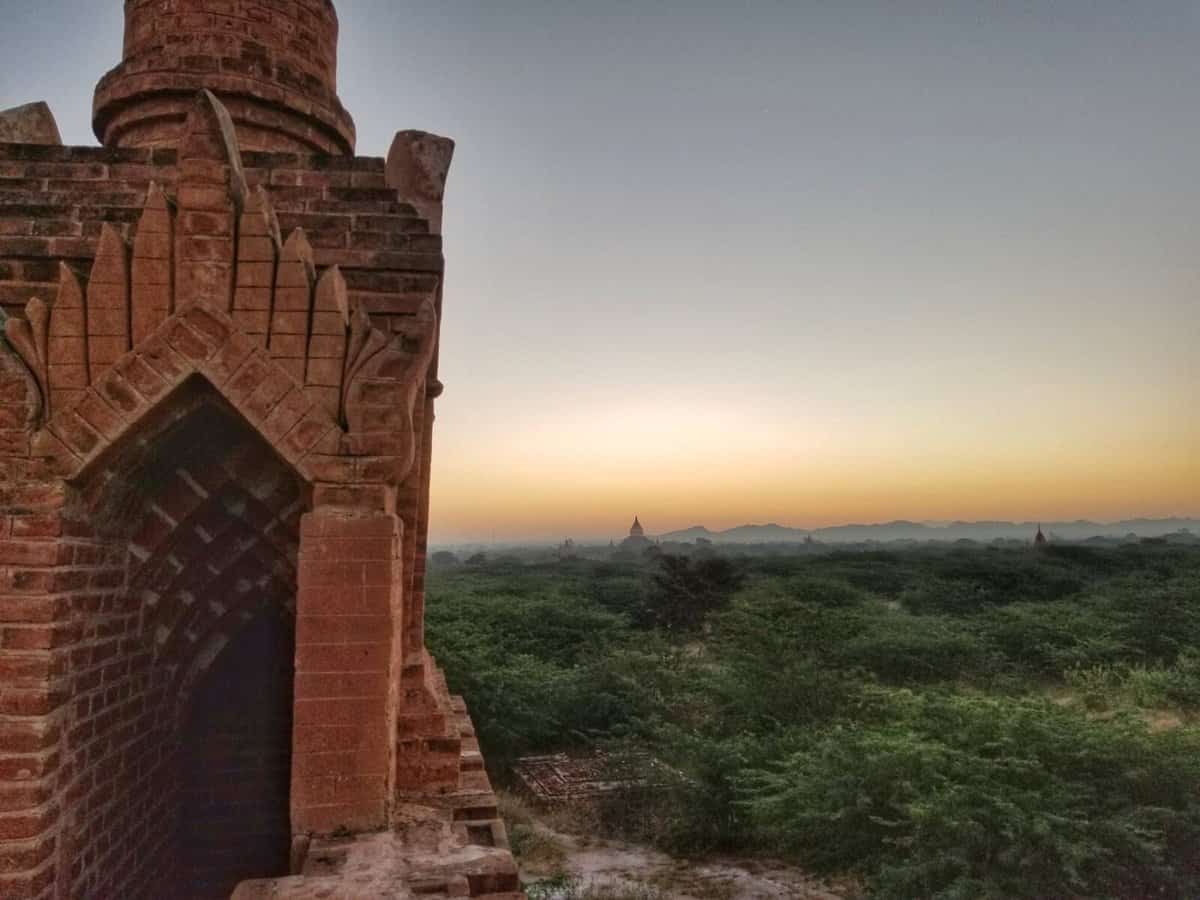
Essential Gear for Visiting Bagan
Packing for Bagan is all about practicality, comfort, and respect for local customs. Here’s your essential checklist:
Clothing:
- Comfortable Shoes/Sandals: Think walking and climbing, with frequent shoe removal at temples. Comfortable sandals or slip-on shoes are your new best friend.
- Cover-up/Scarf: Myanmar is conservative; modest dress is expected at religious sites. A scarf or shawl is perfect for covering shoulders when entering temples.
- Wide-legged Pants: Loose-fitting, breathable pants are both comfy and respectful.
Pro-tip: Pack an empty tote bag for your shoes – your feet will thank you!
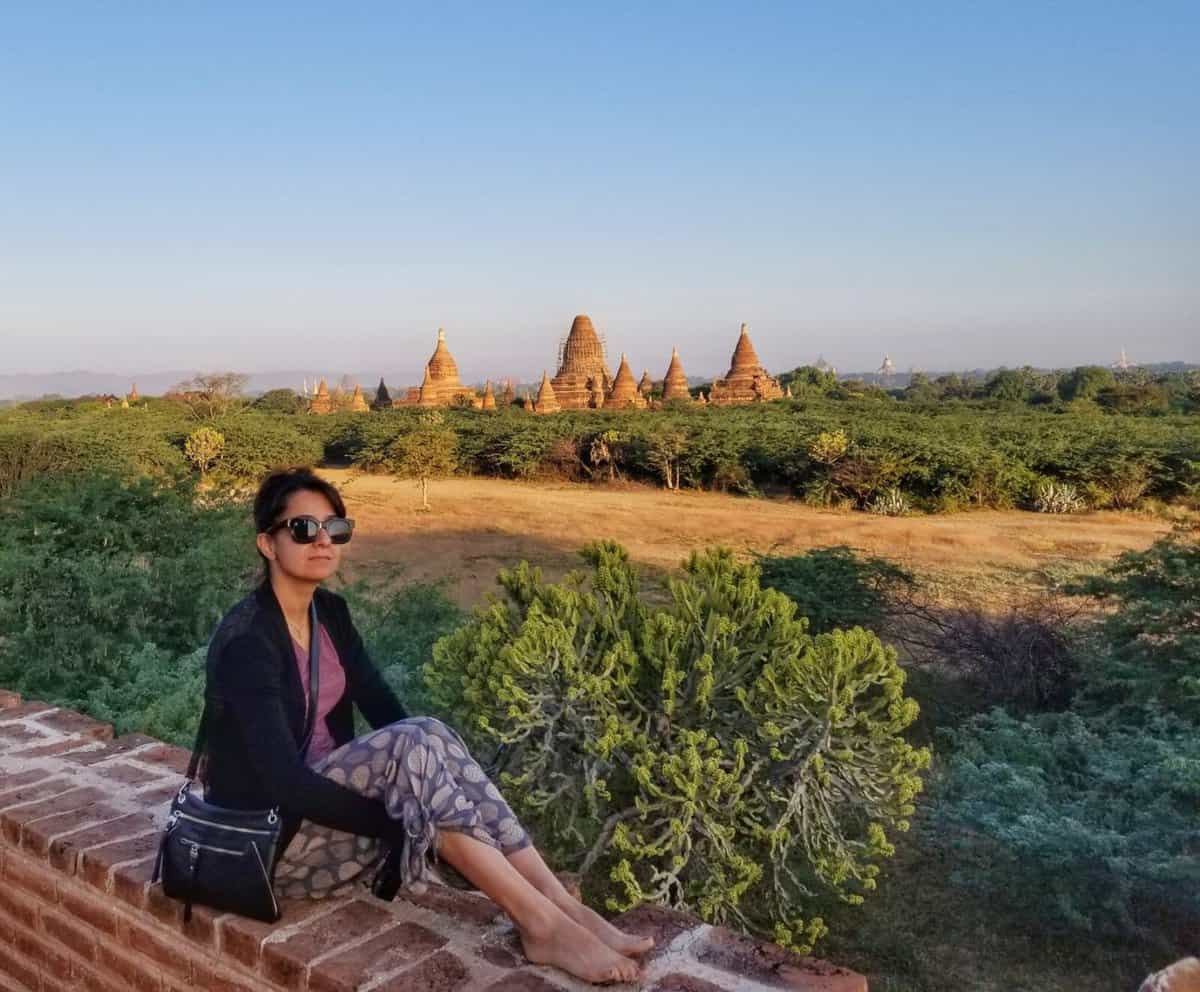
Essentials:
- Sunglasses & Bandana: Protect your eyes from the sun and surprisingly, dust!
- Hat: A wide-brimmed hat provides extra shade.
- Sunblock: Reapply generously, the Bagan sun is no joke.
- Bug Spray: The mosquitoes here are relentless, especially in the evenings.
- Reusable Water Bottle: Essential for staying hydrated.
- Small Backpack: Carry essentials, water, and those all-important shoe bags!
Important Note: You’ll be asked to remove shoes and socks before entering temples. Tight-fitting clothing, like leggings, is also generally discouraged.
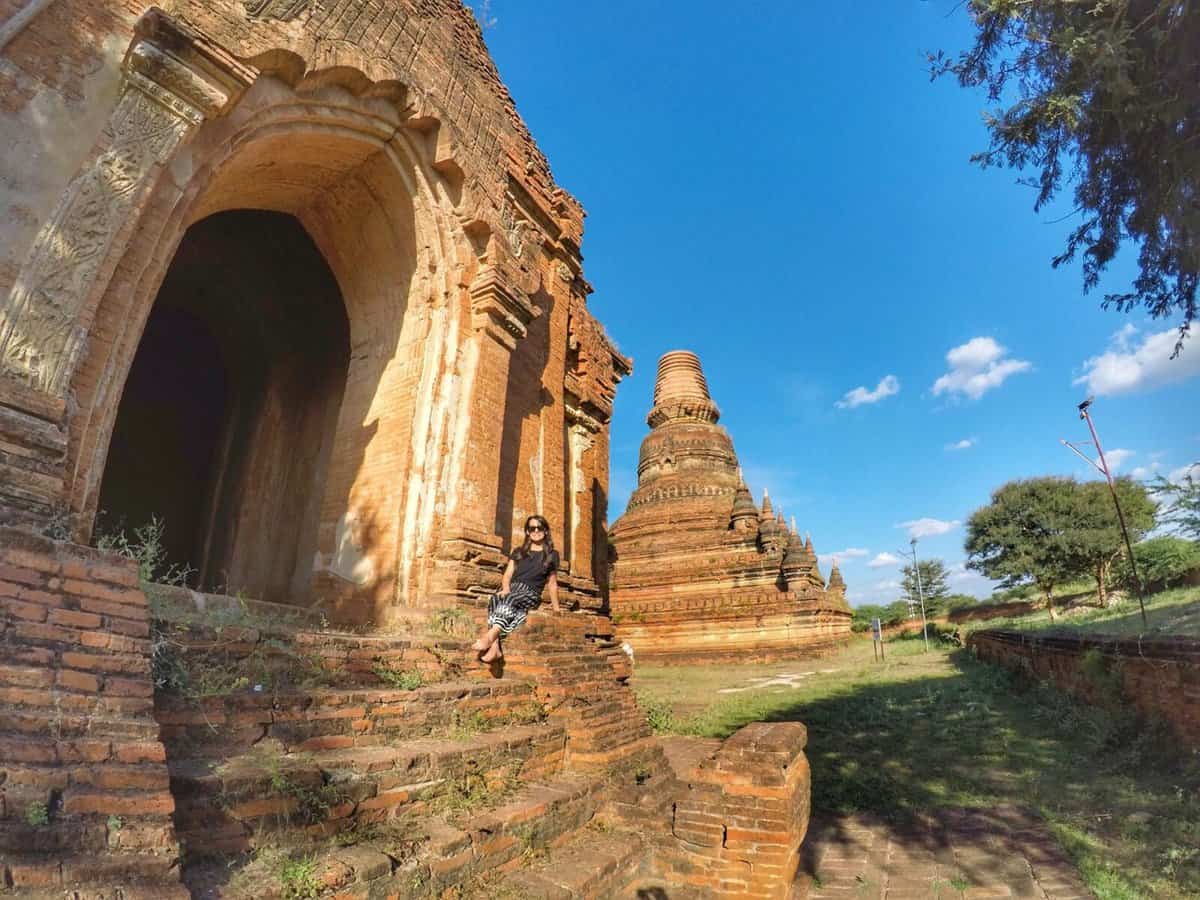
Bagan Transportation Guide
For efficiency and breathtaking views, fly into Bagan Nyaung U Airport (NYU). We took a short, scenic flight from Yangon, and the aerial view of the temples was mesmerizing!
Flights within Myanmar are generally affordable and save precious travel time. The flight to Bagan from Yangon was on a small plane and took about 1 hour and 20 minutes.
Arriving at NYU:
- This small, straightforward airport has a couple of shops and cafes. I didn’t even see any computers there!
- Pay the 25,000 Kyat (per person) Bagan Archaeological Zone entrance fee upon arrival. They conveniently bring your luggage to the cashier, ensuring you don’t miss this crucial step!
- Pro-Traveler Tip: Taxis are easy to find outside, with prices clearly displayed. The ride to Nyaung U town takes about 10 minutes (7,000 Kyat), while our journey to Thande Hotel in Old Bagan was about 20 minutes (10,000 Kyat).
Budget Travelers: Buses and trains offer significantly cheaper alternatives to flying. You can find routes from Yangon and Mandalay to Bagan, as well as to Inle Lake.
Exploring the Temples:
- E-bikes: Our absolute favorite way to explore! They’re easy to handle, even for beginners, and offer freedom and flexibility. The roads can be bumpy, but that’s part of the adventure.
- Guided Bike Tours: Benefit from local knowledge, discover hidden gems, and learn fascinating facts about Bagan’s history.
- Hot Air Balloon: An unforgettable experience, floating over thousands of temples as the sun rises.
- Horse Carts: A traditional mode of transport, best for shorter distances.
Important Note: Driving at night in Bagan can be dangerous due to limited lighting and the possibility of livestock on the roads. Plan accordingly.
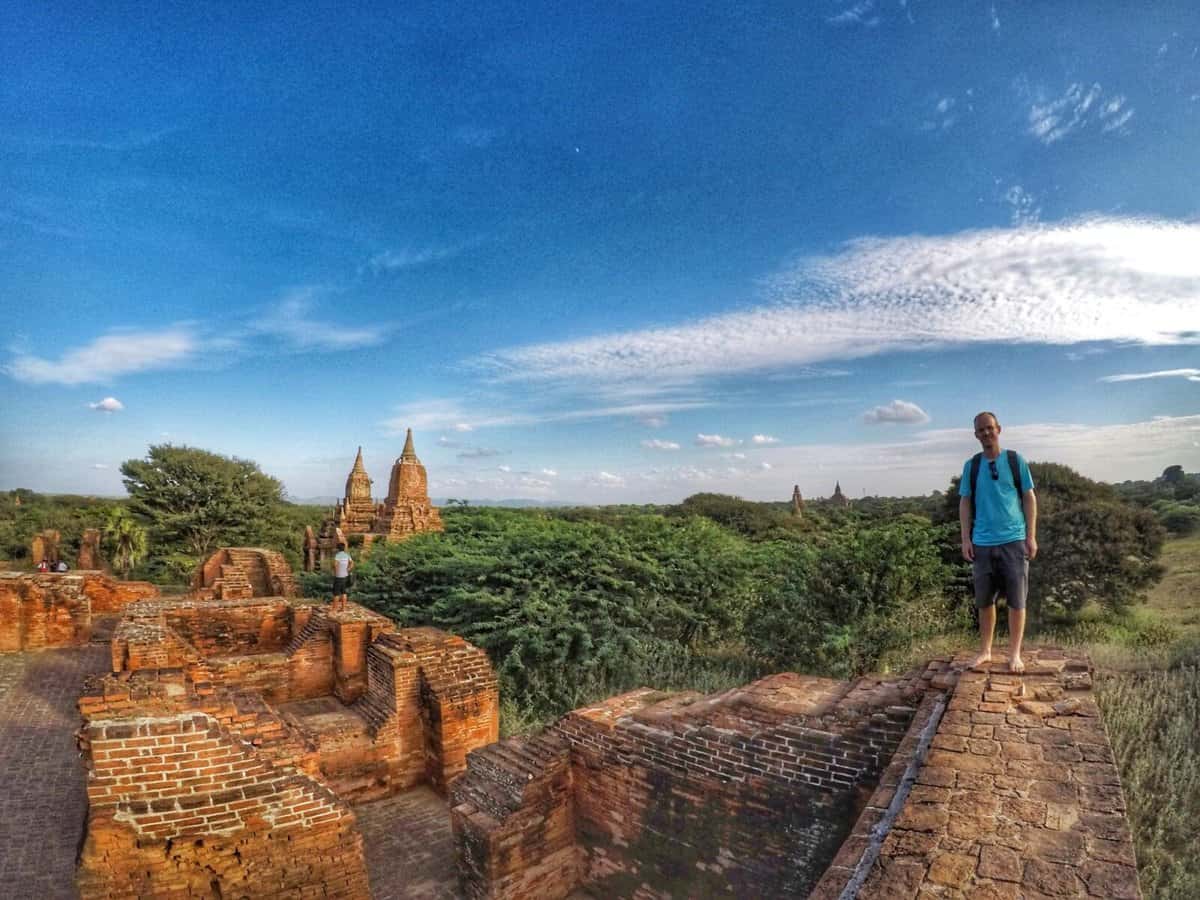
Where to Stay in Bagan: Areas and Hotels
Deciding where to stay in Bagan can be tricky. Each area offers a unique ambiance and advantages. Here’s a breakdown to help you choose the ideal location:
Old Bagan: Temple Proximity and Tranquility
We stayed at the luxurious Thande Hotel in Old Bagan, enticed by its river views and peaceful setting. While the hotel delivered on both, dining options were limited.
Pros:
- Walking distance to major temples.
- Serene and peaceful atmosphere.
- Hotels with stunning river views.
Cons:
- Limited dining options outside of resorts.
- Can be more expensive.
Hotel Recommendations:

New Bagan: Local Vibes and Affordability
New Bagan, a quick motorbike ride from the archaeological zone, provides a more local experience.
Pros:
- More affordable accommodations.
- Local feel with nearby restaurants and shops.
- Good value for money with many newer hotels.
Cons:
- Requires transportation to access temples.
- Limited river view options.
Hotel Recommendations:
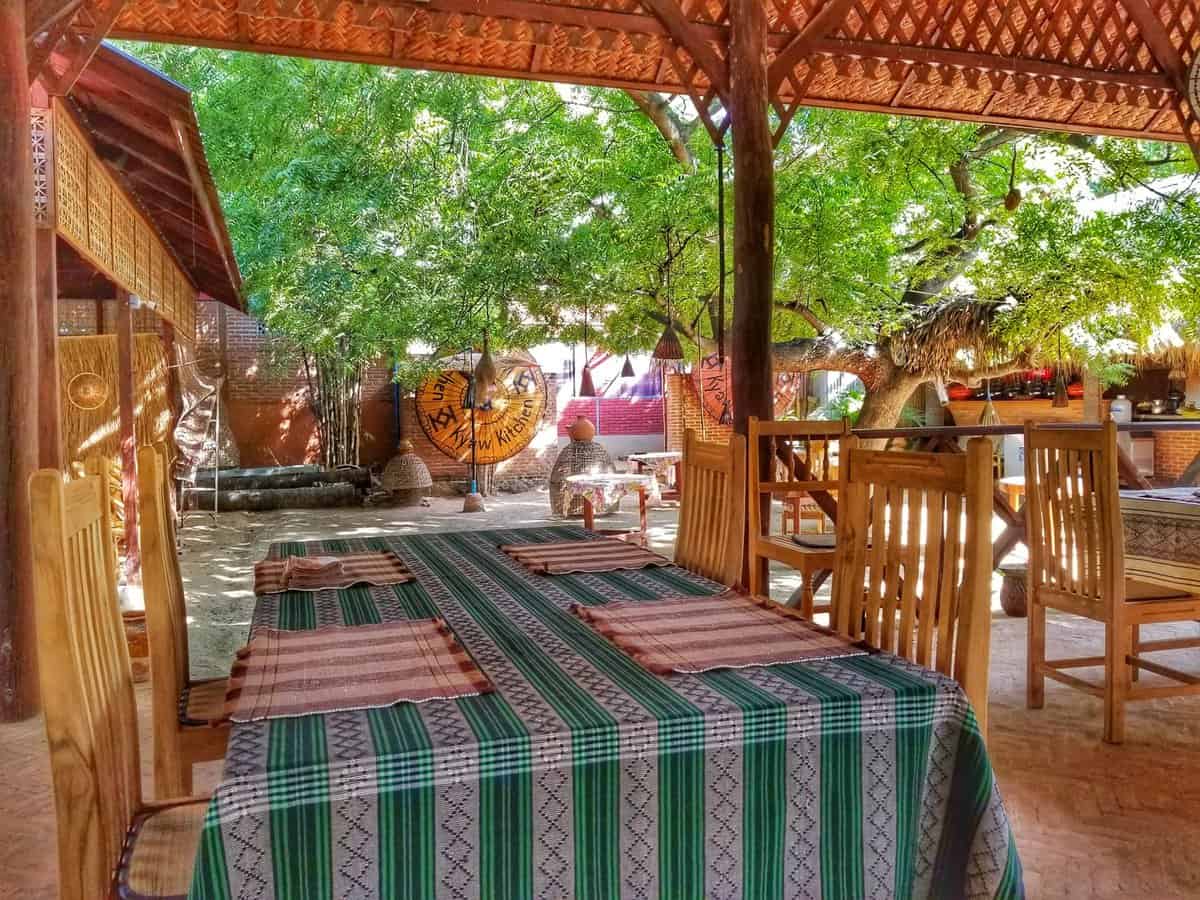
Nyaung-U: Foodie Paradise and Town Buzz
This bustling town center boasts a wider array of restaurants and cafes compared to Old or New Bagan.
Pros:
- Diverse dining scene with plenty of restaurants and cafes.
- More of a “town-like” atmosphere with local markets and shops.
- Greater availability of tourist-friendly amenities (like laundromats).
Cons:
- Requires transportation to access the temples.
Hotel Recommendations:
Our Verdict: We loved the resort experience in Old Bagan, but easy access to a variety of dining options is important. Next time, we’d opt for Nyaung-U.
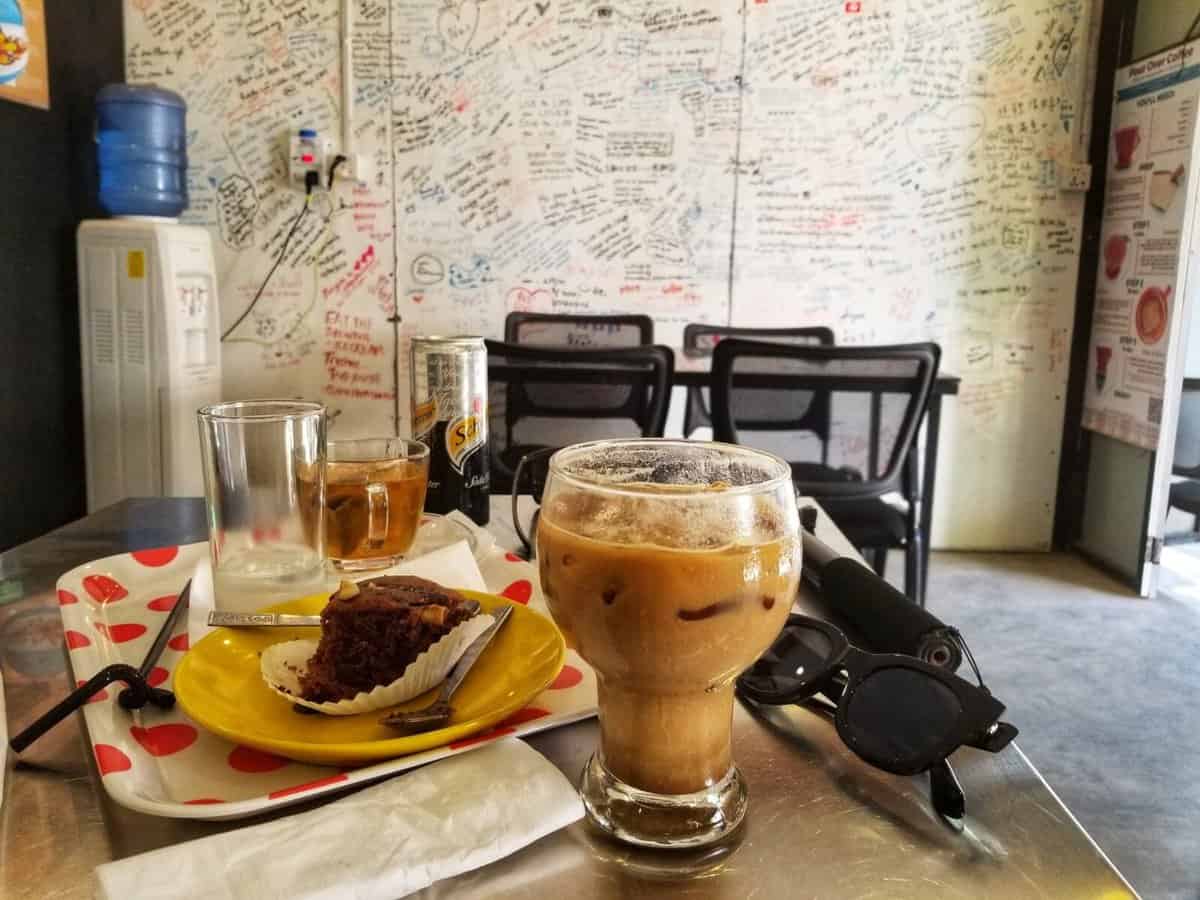
Your Bagan Adventure Awaits
From ancient temples to hot air balloon rides over the plains, Bagan will leave a lasting impression.
We hope these insider tips, inspired by our own unforgettable journey, help you unlock its magic.
Have questions about planning your trip? Share them in the comments below. We’d love to hear about your favorite Bagan experiences!
Happy travels!
Is Myanmar Safe for Tourists in 2024?
The short answer: It’s complicated.
The information below is current as of January 2024. However, the situation in Myanmar is fluid and can change rapidly.
Here’s the bottom line:
- Strong travel advisories are in effect. The US, Australia, and UK governments all advise against traveling to Myanmar due to civil unrest, armed conflict, and the risk of wrongful detention.
- Some areas are considered relatively safe. Tourist hubs like Yangon, Bagan, Mandalay, and Inle Lake are considered less volatile, but caution is still crucial.
- Strict entry requirements are in place. You’ll need proof of COVID-19 vaccination, a negative PCR test, and may be subject to medical screening upon arrival.
Bagan, Myanmar FAQ
Is Bagan worth visiting?
Absolutely! Bagan is a truly magical destination, offering a unique blend of history, culture, and breathtaking scenery. Exploring the thousands of ancient temples scattered across the plains is an experience you won’t soon forget.
What are the best months to visit Bagan?
The best time to visit Bagan is during the cooler, drier months of October to March. The weather is pleasant for temple explorations, and the skies are usually clear for stunning sunrise and sunset views.
What is a fun fact about Bagan, Myanmar?
Bagan is home to the largest and densest concentration of Buddhist temples, pagodas, stupas, and archaeological ruins in the world! There are over 2,200 temples remaining, with estimates suggesting over 10,000 were built originally.
Who built Bagan, Myanmar?
The Bagan Kingdom, ruled by the Pagan dynasty, constructed the majority of the temples between the 11th and 13th centuries. King Anawrahta is credited with unifying the region and establishing Theravada Buddhism as the dominant religion, leading to the construction boom.
How many hours’ drive from Yangon to Bagan?
The drive from Yangon to Bagan takes approximately 10-12 hours, depending on traffic and road conditions. However, we recommend flying for efficiency and a shorter travel time.
Can you visit Bagan now?
As of January 2023, Bagan is accessible to tourists. However, it’s essential to check the latest travel advisories and visa requirements before your trip.
How many days are enough for Myanmar?
To fully experience Myanmar’s highlights, including Bagan, Inle Lake, and Yangon, we recommend 10-14 days. This allows ample time for exploring temples, enjoying boat rides, and soaking in the local culture.
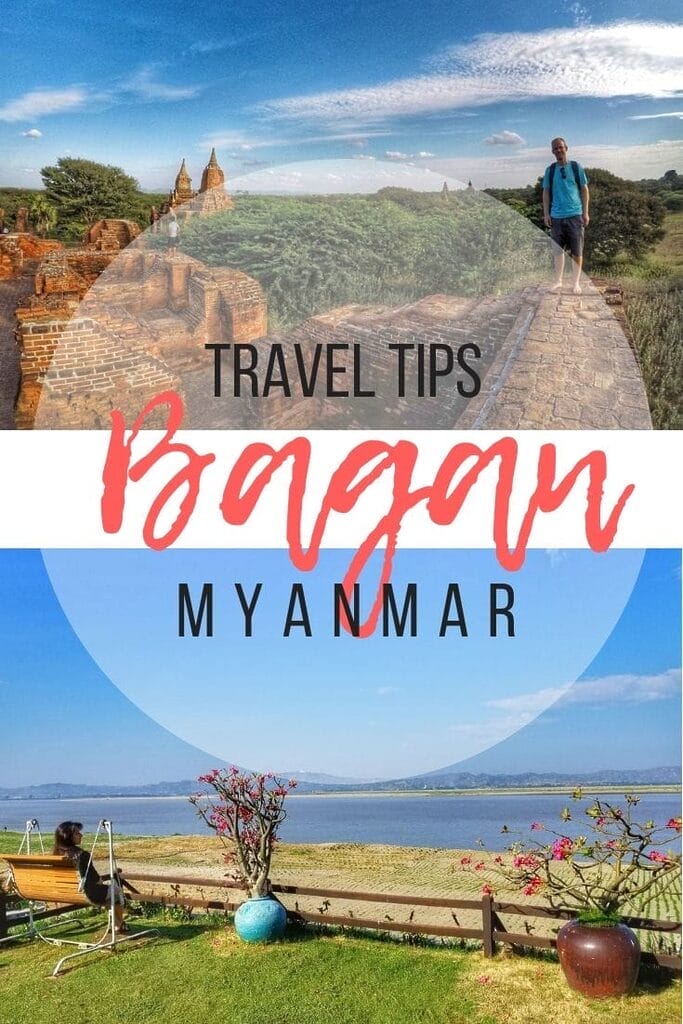















Leave a Reply